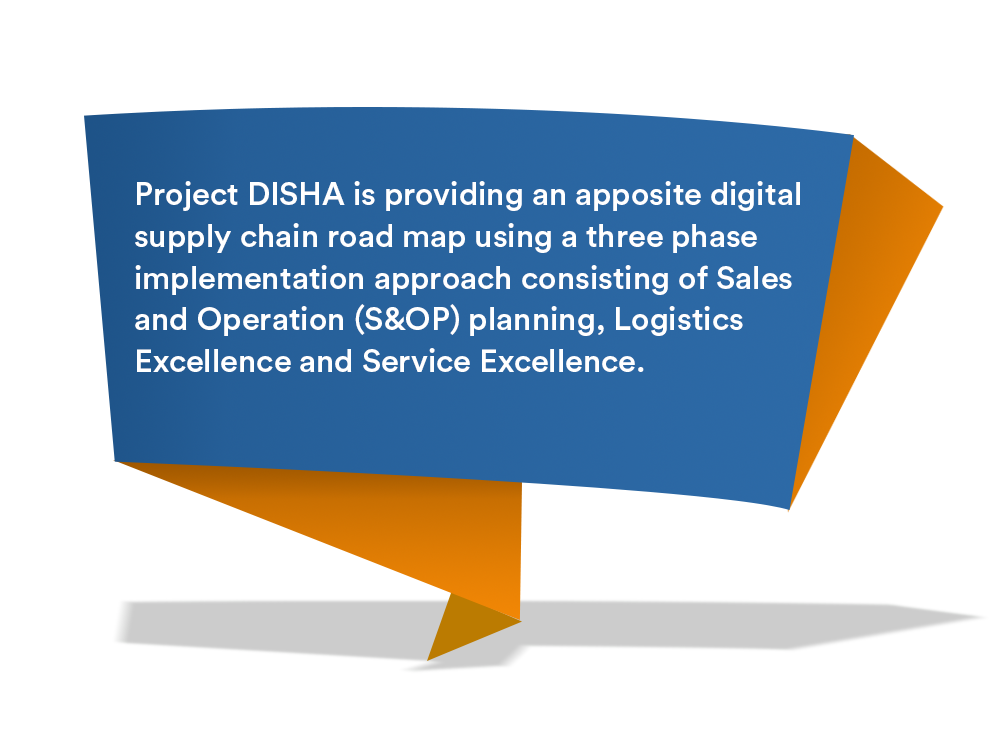Logistics plays a key role in ensuring timely delivery of cement to the end consumers. The role of Cement Industry logistics has continuously evolved from a supply and dispatch oriented system to an integrated system covering areas such as demand generation, consumer satisfaction, accurate connectivity to the end user and adopting technology and innovation for enhancing efficiency, conservation of resources and business sustainability. Driven by such a diverse set of business requirements, several challenges such as an uncertain demand scenario, uncertain production scenarios, multiple sourcing avenues, etc have emerged in cement logistics. These challenges have necessitated requisite management intervention and apposite solutions are being devised by the industry to overcome these challenges using innovative methodologies.
One such solution is being implemented by JK Lakshmi Cement Limited. The project titled as Project DISHA is providing an apposite digital supply chain road map using a three phase implementation approach consisting of Sales and Operation (S&OP) planning, Logistics Excellence and Service Excellence. The process aims to drive efficiency while providing a higher service level and reliable supply.
Project DISHA is a digital supply chain roadmap which aims to enhance efficiency using data based analytics, process excellence and capacity building. The project is being implemented using a three phase approach with phase one S&OP planning, being implemented, and work on other phases in progress. The following is the framework for the project.
S&OP planning is being implemented to unlock potential value in operations. For instance, by changing the source and route of dispatch to a nearby depot or plant, efficiency improvements have been observed leading to significant conservation of resources, and improved delivery efficiency and timelines. S&OP planning was implemented using a four step approach as mentioned below.
To improve demand planning, the existing demand planning systems were migrated from an excel based manual planning system to a real time system which was integrated with SAP. Also, the planning schedule is being shifted from a monthly to a weekly format supported by historical data. Granular demand data is collected at the taluka level across products and channels. The planning, including a sales forecast, is made on a weekly basis using available historical data. The collected data is submitted online and is made available to the sales and procurement team which prepares in advance to meet the upcoming demand.
To drive cross functional integration, the demand is forwarded to the nearest source of supply to save time and drive resource conservation. Large datasets to the tune of 19 million origin destination pairs are considered across the supply chain during the planning process, which is done on a weekly basis. Mixed integer linear programming is engaged to minimise the cost of service across flows.
To promote better coordination and ensure that significant deviations are not observed from planned growth, the collected data is made visible across all offices/plants. About 400 districts across the country are being covered in the process at present with 60% adherence. Advance features such as a transport tracking facility enable every consignment to be tracked by the company and the dealer for better management.
To ensure that the process is being implemented in an optimum manner, review meetings are being held every month to analyse progress. Further improvements are being made through discussions and further granulating the data from month level demand to order level demand.
Significant challenges including mindset realignment are being faced during project implementation. A lot of brainstorming sessions are held for improving the process. Significant challenges were faced with data collection at the taluka and the district level. Trainings were provided to the field personnel to help them understand the process, which took almost 6 months. It was also difficult to refresh the mindset of the dealer network who were resisting change as they were used to getting their supply from a particular plant location. Various encouraging initiatives such as incentives, in addition to other methods were engaged in the process.
Project DISHA is an ambitious project which has the capability to enhance efficiency across the supply chain and improve logistics cost leading to conservation of resources. As with any project of significant magnitude, challenges are being observed with Project DISHA as well. These are, however, being overcome using the right mindset and through appropriate resource allocation.
